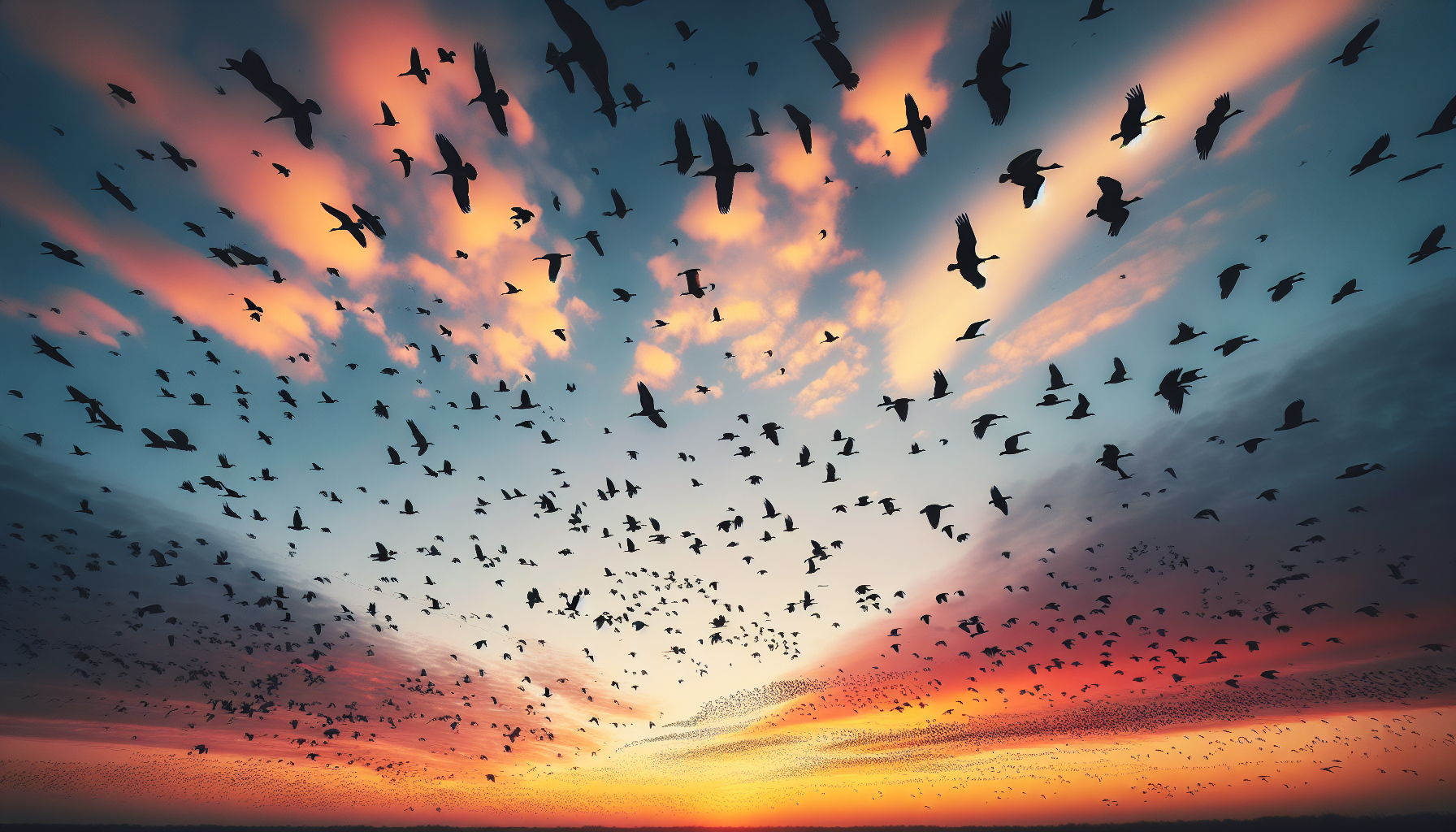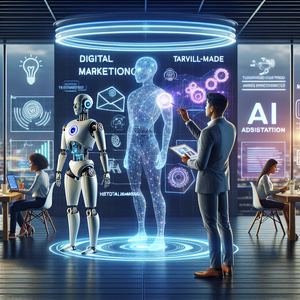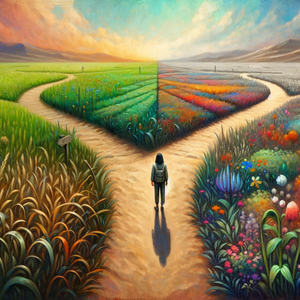The Unseen Impact of Automation on Creative Jobs

For decades, creativity was thought to be beyond the grasp of machines. Algorithms could replicate logic and structure, but the emotional and aesthetic depth of human artistry seemed unattainable. Today, that belief no longer holds true. AI-powered tools are capable of generating visuals, text, music, and even film scripts, often with stunning results. For example, DALL·E, an AI system developed by OpenAI, can produce intricate, high-quality images from simple text prompts. A designer might type "a futuristic skyscraper in a cyberpunk cityscape, glowing neon under a night sky," and within seconds, receive a professional-grade rendering. Similarly, ChatGPT has taken the world of writing by storm, generating everything from marketing copy to fictional stories with remarkable coherence and style. These tools are not just efficient; they are transformative. They democratize creativity, enabling individuals and small businesses to produce work that once required specialized training or expensive software. A startup without a dedicated graphic designer can now create striking visuals, and a solo entrepreneur can craft polished marketing campaigns—all with minimal cost or effort. This accessibility opens up creative opportunities for millions of people worldwide, but it also raises critical questions about the future of creative professions.
The Complement, Not the Replacement
One optimistic perspective is that these tools do not replace human creativity but complement it. By automating time-consuming or repetitive tasks, AI frees up creative professionals to focus on higher-order work. For instance, a graphic designer might use DALL·E to generate a rough concept, then refine and personalize it to align with a client’s vision. Similarly, a writer can leverage ChatGPT to overcome writer’s block or draft outlines, reserving their energy for crafting nuanced arguments or emotionally resonant narratives. This synergy between human ingenuity and machine efficiency has the potential to expand the scope of what’s creatively possible. Professionals can spend more time on innovation, strategy, and storytelling—qualities that remain difficult, if not impossible, for AI to replicate. Consider the case of fashion designers. AI tools can analyze trends, predict consumer preferences, and generate initial design ideas, but the final product still relies on human intuition and artistry. Similarly, filmmakers can use AI to storyboard scenes or enhance post-production processes, but the emotional depth and vision of a director remain central to the storytelling process. In this sense, automation could evolve as a powerful partner, allowing creatives to push boundaries rather than replacing them outright.
The Threat to Entry-Level Roles
However, not all implications of automation are positive. One of the most concerning aspects of AI in creative fields is its potential to disrupt entry-level roles. Positions like junior graphic designers, copywriters, and video editors—often seen as stepping stones into the industry—are particularly vulnerable. Small businesses and startups, for example, might forgo hiring entry-level talent altogether, opting instead for AI tools like Canva or ChatGPT to handle basic design and content needs. Freelance writers are already feeling the pressure as clients increasingly turn to AI for low-cost blog posts, social media captions, and email copy. This trend could create a bottleneck in career development. Without entry-level roles to provide experience and mentorship, aspiring creatives may struggle to build portfolios and progress to more advanced positions. The industry risks losing a generation of talent, further exacerbating inequality and limiting diversity in creative fields.
The Question of Authenticity
Another pressing issue is the question of authenticity. While AI-generated content is often polished and professional, it lacks the emotional depth, cultural context, and lived experience that inform human creativity. A chatbot like ChatGPT might write a poem that rhymes beautifully, but it cannot replicate the raw emotion of a piece inspired by personal heartbreak or triumph. Similarly, while DALL·E can create visually stunning images, its outputs are based on patterns and data, not an artist’s unique perspective or vision. This raises a broader philosophical question: Will audiences value AI-generated content as much as human-created works? In a world oversaturated with algorithmic art and automated writing, truly original, human-driven creativity could become a rare and highly prized commodity. Artists who infuse their work with authenticity, emotional resonance, and individuality may find themselves at a competitive advantage.
Navigating the Future of Creative Work
So how should creative professionals adapt to this rapidly changing landscape? The key lies in embracing these tools rather than resisting them. By learning to use AI effectively, creatives can stay relevant and competitive in a tech-driven world. For instance, a writer who understands how to prompt ChatGPT for specific outputs can use it as a brainstorming partner or research assistant. A graphic designer fluent in AI tools like MidJourney can offer clients faster turnaround times and a broader range of creative options. Those who integrate AI into their workflows will likely find themselves in high demand, not just as artists but as technologists who understand how to bridge the gap between human creativity and machine efficiency. At the same time, it’s crucial to double down on skills that machines cannot easily replicate. Emotional intelligence, storytelling, cultural awareness, and the ability to build relationships remain uniquely human strengths. By cultivating these attributes, creatives can future-proof their careers and continue to offer value that no machine can replace.
The rise of automation in creative fields represents both an opportunity and a challenge. AI tools like DALL·E, MidJourney, and ChatGPT are reshaping the way we approach art, design, and writing, offering new possibilities while raising difficult questions about the value of human effort and the future of creative professions. Rather than viewing these tools as a threat, creative professionals should see them as collaborators—resources that can enhance their work rather than diminish it. By embracing automation and honing uniquely human skills, the creative industry can navigate this transformation without losing sight of what makes it special: the ability to tell stories, evoke emotions, and bring individual perspectives to life. In the end, while machines may master the mechanics of creation, the soul of art will always belong to humanity. The challenge lies in finding a balance between leveraging technology and preserving the authenticity that defines us as creators.
AI-Assisted Graphic Designer
Marketing agencies, tech startups, and e-commerce brands leveraging digital-first strategies
Core Responsibilities
Utilize AI tools (e.g., DALL·E, MidJourney) to generate initial design concepts and refine them into polished visuals.
Collaborate with clients or creative teams to align AI-generated outputs with brand identity and project goals.
Stay updated on advancements in AI design tools to improve efficiency and creativity.
Required Skills
Proficiency in AI design platforms and traditional graphic design software (e.g., Adobe Creative Suite).
Strong understanding of color theory, typography, and design principles to enhance AI outputs.
Ability to balance automation with human creativity for personalized, impactful designs.
AI Content Strategist
Digital marketing firms, SaaS companies, and content-driven startups
Core Responsibilities
Develop content strategies that integrate AI tools like ChatGPT to produce SEO-optimized blogs, social media posts, and email campaigns.
Edit and refine AI-generated content to ensure quality, originality, and brand alignment.
Analyze audience engagement data to optimize future AI-assisted content creation.
Required Skills
Expertise in AI text-generation platforms and natural language processing tools.
Strong editing and storytelling skills to infuse AI outputs with emotional resonance and human context.
Familiarity with digital marketing and analytics platforms (e.g., Google Analytics, HubSpot).
Creative Technologist
Advertising agencies, innovation labs, and global consumer brands exploring cutting-edge digital experiences
Core Responsibilities
Act as a bridge between creative teams and technology, implementing AI tools to enhance workflows.
Experiment with emerging technologies (e.g., generative AI, AR/VR) to develop innovative creative solutions.
Educate teams on integrating AI-driven tools while maintaining a focus on human-centered design.
Required Skills
Proficiency in coding languages (e.g., Python, JavaScript) and familiarity with AI platforms.
Strong problem-solving skills to adapt technology to creative challenges.
Knowledge of UX/UI design to ensure seamless creativity-technology integration.
AI-Powered Film or Video Editor
Film production studios, content agencies, and social media platforms with high video output needs
Core Responsibilities
Use AI-powered editing tools (e.g., Adobe Sensei, Runway ML) to automate repetitive editing tasks like color correction and scene assembly.
Collaborate with directors and cinematographers to infuse human vision into AI-assisted edits.
Integrate AI-generated storyboards or visual effects into final film or video projects.
Required Skills
Expertise in video editing software (e.g., Adobe Premiere, Final Cut Pro) and AI-enhanced editing tools.
Ability to creatively merge AI-generated elements with human storytelling techniques.
Understanding of cinematic storytelling, pacing, and visual aesthetics.
AI Trend Analyst & Creative Consultant
Fashion houses, media companies, and innovation consultancies focused on future-proofing creativity
Core Responsibilities
Leverage AI analytics tools to identify emerging trends in art, fashion, and media.
Advise creative teams on how to incorporate data-driven insights into their work while maintaining authenticity.
Generate forecasts on consumer preferences and cultural shifts using AI-driven predictive modeling.
Required Skills
Strong background in data analytics and AI tools (e.g., Tableau, Google Cloud AI).
Deep knowledge of creative industries and cultural trends to contextualize data insights.
Excellent communication skills to bridge the gap between data and creative execution.


